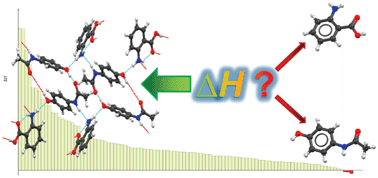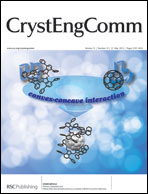Towards ab initio screening of co-crystal formation through lattice energy calculations and crystal structure prediction of nicotinamide, isonicotinamide, picolinamide and paracetamol multi-component crystals†
Abstract
Co-crystallisation of a drug with another molecule to form a new crystalline material is an appealing route to enhance physical properties. Despite mounting research effort, there is still considerable uncertainty whether a given co-crystal will form. Previous attempts to use lattice energy calculations to investigate whether a potential co-crystal is thermodynamically more stable than its pure co-former crystals have been inconclusive. In the present study, dispersion-corrected density functional theory is used to minimise the lattice energies of all known co-crystals and salts of nicotinamide, isonicotinamide and picolinamide, and their corresponding neutral co-formers (excluding any organometallic compounds). Out of the resulting 102 co-crystals and salts, 99 (97%) are found to be more stable than their corresponding co-formers. In addition, full crystal structure prediction studies show that two paracetamol co-crystals are very unstable in comparison to their co-formers, thus explaining why these co-crystals have not been observed experimentally. These results demonstrate that a simple yet accurate thermodynamic approach can predict reliably whether a co-crystal can be formed.


 Please wait while we load your content...
Please wait while we load your content...